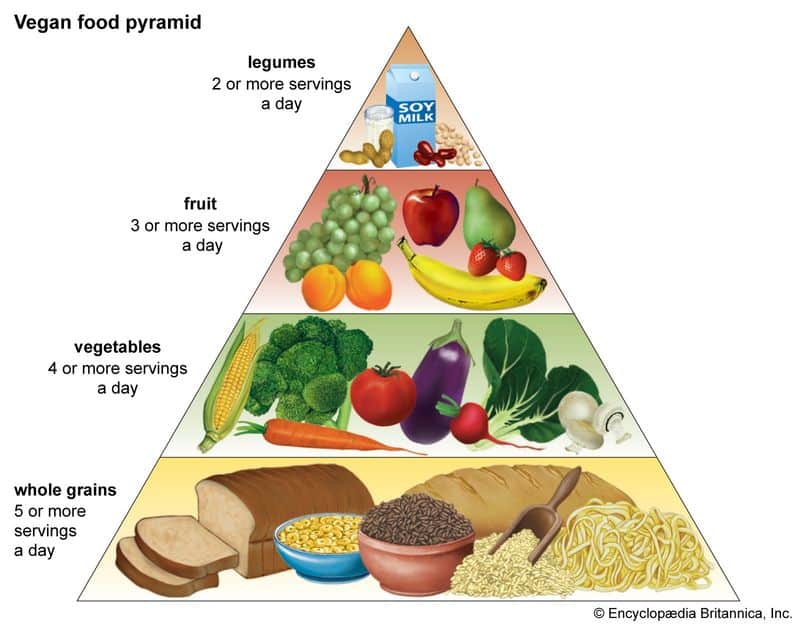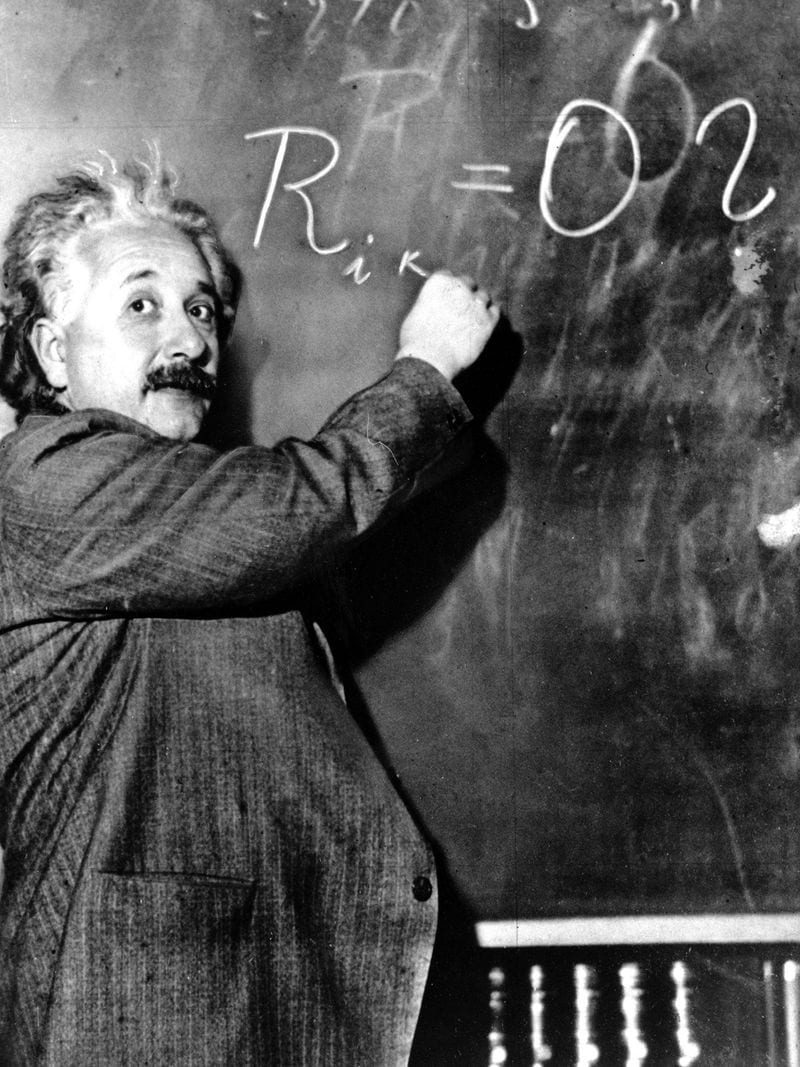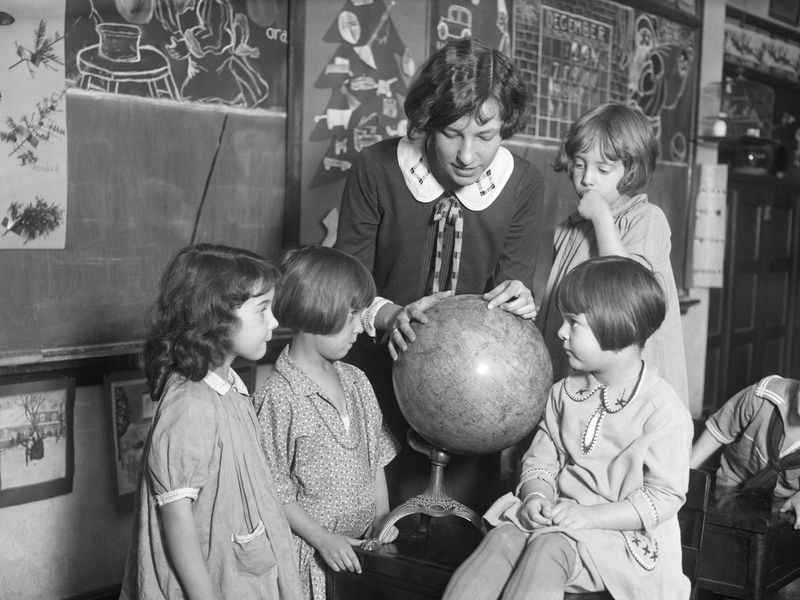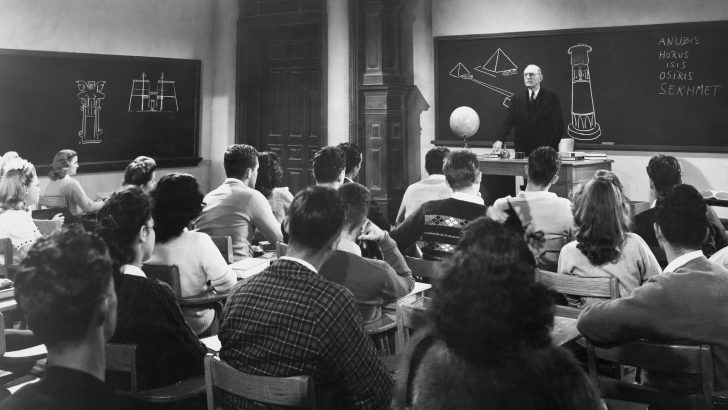High school education shapes the foundational knowledge of every generation. For Boomers, certain teachings have since been debunked or evolved. What was once considered factual in their classrooms might surprise today’s students. This journey through time explores 14 concepts Boomers learned, which have since been disproven or redefined.
Each item reveals not only a glimpse into past educational doctrines but also how knowledge and understanding have shifted. By examining these teachings, we can appreciate the advancements in education and awareness over the decades. Here are 14 ideas that have transformed significantly from what Boomers were taught.
1. Pluto as a Planet

The celestial status of Pluto has changed. Once heralded as the ninth planet, it was demoted to a dwarf planet in 2006 by the International Astronomical Union. This reclassification surprised many, especially Boomers who grew up learning about nine planets. Science evolves, and so does our understanding of the cosmos. Today, students learn about eight planets, with Pluto serving as a fascinating case study in scientific classification. The discovery and subsequent study of similar celestial bodies led to this decision, teaching us that classifications are subject to change as our exploration and comprehension of the universe expand.
2. Use of Cursive Writing

Cursive writing was once a staple of classroom learning. Students practiced loops and swirls diligently, believing it would be a lifelong skill. Today, however, cursive is fading from curriculums as digital communication dominates. Typing skills have taken precedence, with keyboards replacing paper and pen. While Boomers emphasized beautiful penmanship, modern education focuses on digital literacy. This shift highlights the changing tools we use to communicate. Yet, cursive holds nostalgic value for many, representing a bygone era of personal, handwritten correspondence in an increasingly digital world.
3. The Food Pyramid

Boomers were taught dietary guidelines using the food pyramid, a model that has since been replaced by the MyPlate system. The pyramid suggested a hierarchy of food groups that emphasized grains over other nutrients. Modern nutritional science, however, promotes a balanced plate that includes fruits, vegetables, proteins, and grains in equal measure. This shift reflects growing knowledge about balanced diets and the importance of portion control. Boomers might find today’s guidance more actionable, as it visualizes meals in a practical, relatable way, aligning dietary recommendations with contemporary health insights.
4. The Metric System Adoption

Boomers were often told that the United States would fully adopt the metric system. Schools taught metric conversions, preparing students for an impending change. Yet, the switch never fully materialized, leaving the U.S. as one of the few countries clinging to the imperial system. Although the metric system is used in science and medicine, everyday life remains largely unchanged. This ambiguity created a unique educational scenario where Boomers learned both systems, reflecting a world caught between tradition and global standards. The persistence of inches and feet in daily life continues to puzzle those wishing for metric simplicity.
5. Einstein’s Static Universe

In the classroom, Boomers might have learned about Albert Einstein’s concept of a static universe. Einstein initially proposed a cosmological constant to support this idea. However, the discovery of the expanding universe by Edwin Hubble in 1929 transformed our understanding of cosmology. Einstein later called the static universe theory his “greatest blunder.” Today, students explore a universe in constant motion, expanding at an accelerating pace. This shift in understanding underscores the dynamic nature of scientific inquiry and the importance of remaining open to new evidence that can reshape established theories.
6. Bloodletting as Remedy

Though largely outdated by the Boomer era, the concept of bloodletting lingered in some educational materials as a once-common medical practice. Historically used for various ailments, it was based on ancient beliefs about balancing bodily humors. Today, we understand that this practice was often more harmful than beneficial. Modern medicine relies on evidence-based treatments, moving away from such antiquated methods. The evolution of medical knowledge highlights the importance of scientific research and ethical considerations in developing effective healthcare practices, ensuring treatments benefit rather than harm patients.
7. Gender-Specific Roles

Boomers experienced education in a time when gender-specific roles were clearly defined. Boys were steered towards sciences and trades, while girls focused on home economics. Today, these rigid roles have diminished significantly. Educational institutions encourage a more inclusive environment, promoting equality in STEM fields and beyond. This evolution reflects broader societal changes towards gender equality. Encouraging diverse interests irrespective of gender helps break down barriers, opening opportunities for all. The shift from traditional roles to a more balanced approach empowers the next generation to pursue passions freely, regardless of gender.
8. Caloric Restriction for Weight Loss

Boomers were often taught that strict caloric restriction was the key to weight loss. This simplistic approach ignored nutritional balance and the importance of whole foods. Modern nutrition emphasizes a holistic view, considering the quality of calories and overall health. It’s not just about eating less, but eating better. This shift recognizes the complex interplay of diet, exercise, and metabolism. The evolution from calorie counting to mindful eating reflects a broader understanding of health, encouraging sustainable and enjoyable lifestyle choices that support well-being over the long term.
9. Cold War-Era Nuclear Drills

In an era marked by geopolitical tension, Boomers participated in nuclear drills as a part of regular schooling. “Duck and cover” was a common phrase. While these drills aimed to prepare students for potential threats, they also contributed to a climate of fear. Today, the focus has shifted towards global cooperation and diplomacy, aiming to prevent such conflicts. This change reflects a broader understanding of international relations, emphasizing dialogue over confrontation. The legacy of those drills remains a poignant reminder of a time when the threat of nuclear war loomed large over everyday life.
10. Saturated Fats and Heart Disease

Boomers learned that saturated fats were the main culprits in heart disease. This belief led to widespread dietary changes, often replacing natural fats with processed alternatives. Current research paints a more nuanced picture, recognizing that not all saturated fats are equal. Healthy fats are essential for heart health, and balance is key. This evolving narrative demonstrates the complexities of nutrition science. Emphasizing whole, unprocessed foods and understanding different fat types helps guide healthier dietary choices, debunking the myths that once shaped public perception and dietary guidelines.
11. Spare the Rod, Spoil the Child

The adage “spare the rod, spoil the child” reflected a common disciplinary approach in education. Corporal punishment was seen as necessary for maintaining order. Over time, educational philosophies have shifted, recognizing the negative impact of physical punishment on child development. Modern classrooms prioritize positive reinforcement and emotional support, fostering environments where students feel safe and valued. This transformation highlights the importance of empathy and respect in education, encouraging children to develop self-discipline and confidence. Understanding the harmful effects of outdated practices ensures that learning spaces are nurturing and conducive to growth.
12. Grammar Rules: Never Split Infinitives

Boomers might have learned strict grammar rules, such as never splitting infinitives. This rule, rooted in Latin grammar, is less rigid in contemporary English usage. Modern writing embraces clarity and readability over strict adherence to outdated conventions. Language evolves, and with it, the flexibility to express ideas effectively. Writers today prioritize communication, allowing for creative expression without the constraints of traditional rules. This evolution encourages a more natural, conversational tone in writing, reflecting how language adapts to better serve its speakers and readers in an ever-changing world.
13. Single Career Path Expectation

Boomers were often taught to pursue a single career path, working for one company until retirement. This linear career model has shifted dramatically. Today’s workforce values flexibility and adaptability, with individuals pursuing multiple careers over their lifetime. The rise of technology and gig economies has transformed job landscapes, encouraging continuous learning and skill development. This evolution reflects broader economic and cultural shifts, where work-life balance and personal fulfillment take precedence over traditional career trajectories. The modern career journey is dynamic, embracing diverse opportunities that cater to individual passions and changing market needs.

Well, hello there!
My name is Jennifer. Besides being an orthodontist, I am a mother to 3 playful boys. In this motherhood journey, I can say I will never know everything. That’s why I always strive to read a lot, and that’s why I started writing about all the smithereens I came across so that you can have everything in one place! Enjoy and stay positive; you’ve got this!

